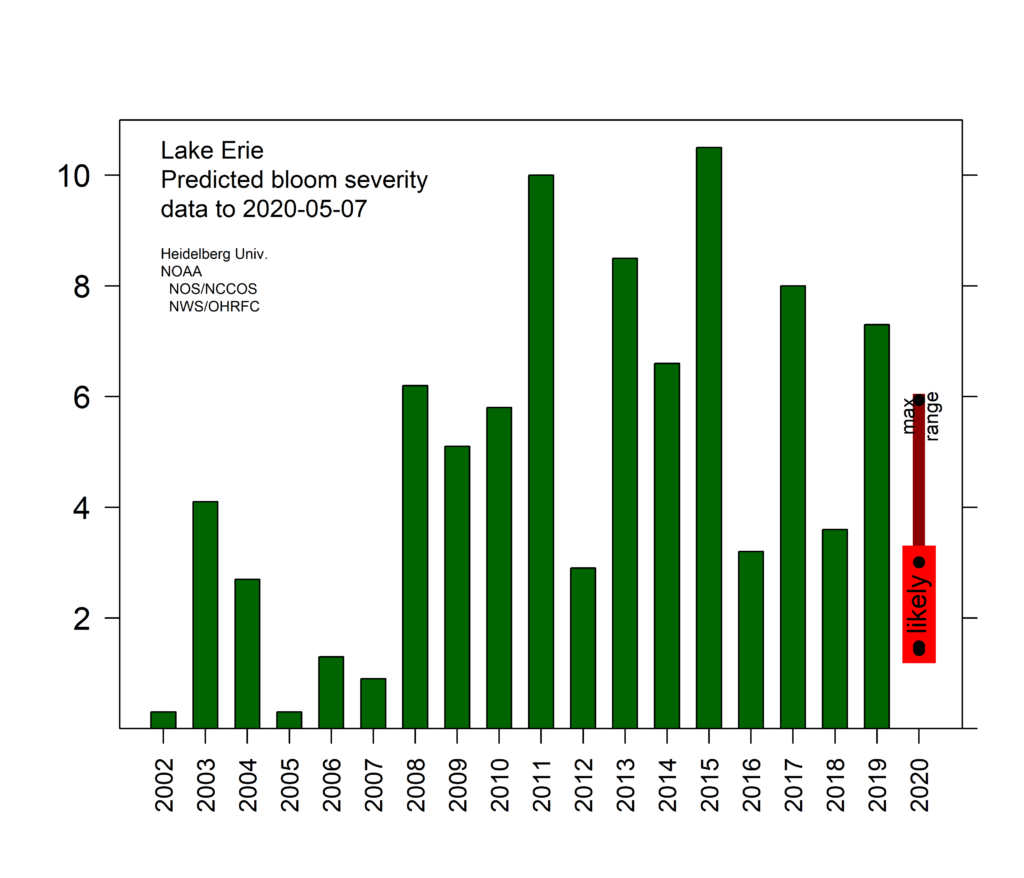Western Lake Erie is expected to experience a lower than average harmful algal bloom (HAB) this summer, according to the 2020 Lake Erie Harmful Algal Bloom Early Season Projection issued by NOAA’s National Centers for Coastal Ocean Science (NCCOS) earlier today.
Projections of the bloom’s biomass will be issued weekly through early July. On July 9, NOAA will issue the official Lake Erie HAB Seasonal Forecast via a virtual webinar co-hosted with Ohio Sea Grant. Click here to subscribe to the HAB forecasts and seasonal projections for Lake Erie.

Early indications suggest that this year’s Lake Erie bloom will be smaller than the 2019 bloom. March and April rains and associated discharge and phosphorus loads for the Maumee River have been lower than average. Models indicate a likely severity of 4 or less, but the uncertainty in these forecasts indicate a potential severity of up to 6 (still less than 7.5 seen in 2019). A severity index above 5 indicates a potentially harmful bloom. The largest blooms, 2011 and 2015, were 10 and 10.5, respectively.
The severity of the western Lake Erie cyanobacterial HAB depends on input of total bioavailable phosphorus (TBP) from the Maumee River during the loading season (March – July). The NOAA forecast gives an estimate of potential bloom severity based on a combination of TBP measurements to date and forecasts of river discharge and phosphorus loads from now into July.
Rain events are expected for the rest of May and into June, and are included in the forecast. There is still uncertainty in the projected maximum severity of the bloom due to limitations in forecasting the exact location and amount of rainfall the rest of May.
The impact of a bloom on drinking water and recreation in Lake Erie depends on its location, toxicity, and duration. The cone of uncertainty for this forecast will continue to narrow as additional rain and river discharge data is collected over the next two months. Any bloom that develops will change with time and move with the wind, and NOAA will provide information on the presence and location of any bloom throughout the summer.
